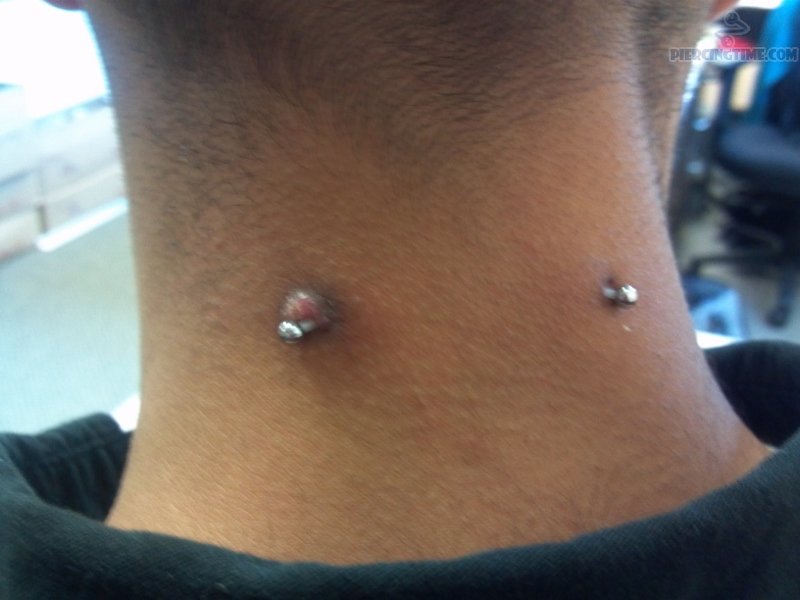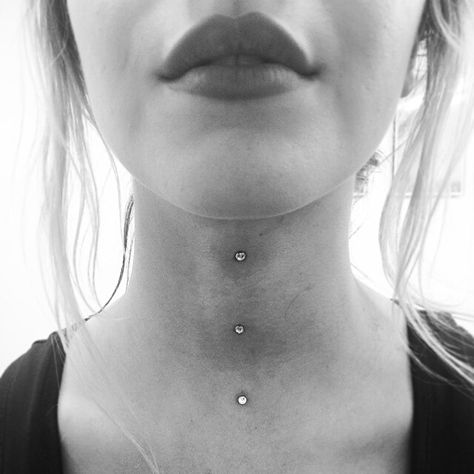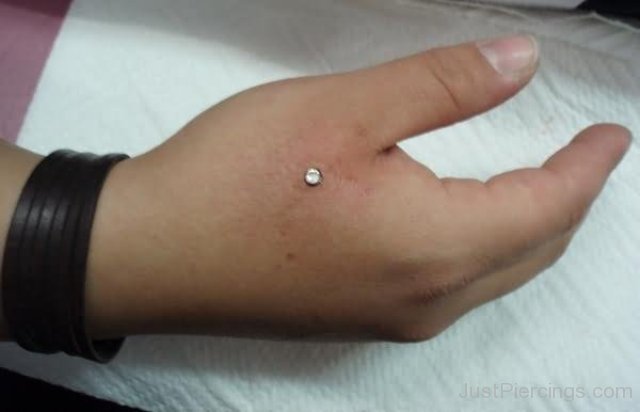Surface Piercing On Neck With Small Dermals


Body modifications have become increasingly popular in recent years, and one type of piercing that has gained attention is the dermal anchor throat piercing. This unique piercing involves inserting a small piece of jewelry under the skin, which creates the illusion that the jewelry is sitting on top of the skin. While dermal anchor piercings can be placed in various locations on the body, a throat piercing is a daring and bold choice that can add an edgy touch to your overall look. However, like any body modification, it’s essential to understand the procedure and potential risks before making a decision. In this article, we’ll cover everything you need to know about dermal anchor throat piercings.
Choosing a Piercer: The first step to getting a dermal anchor throat piercing is to find a reputable piercer who is experienced in dermal anchor piercings. Do your research, read reviews, and ask for recommendations from trusted friends. Ensure that the piercer is licensed, and the studio adheres to proper hygiene and safety protocols.
Preparation: Once you’ve found a piercer, they’ll explain the procedure and have you sign a consent form. They’ll also help you choose the right jewelry, which is a critical aspect of the piercing. Dermal anchor jewelry comes in various shapes, sizes, and materials. The piercer will choose a size that fits your throat’s anatomy, and you can select the shape and material that best suits your style.
The Piercing Process: The piercer will clean the area and mark where the jewelry will be inserted. They’ll then use a dermal punch to create a small hole in the skin, insert the jewelry base, and secure it with a dermal anchor. The entire procedure usually takes 30 minutes or less.
Cleaning the Piercing: Proper aftercare is crucial to ensure your dermal anchor throat piercing heals correctly. The piercer will provide specific instructions, but typically, you’ll need to clean the piercing twice a day with saline solution or a specialized piercing cleaner. Avoid using harsh soaps or alcohol-based solutions.
Avoiding Infection: To prevent infection, avoid touching the piercing with dirty hands, and keep it dry during showers or while swimming. Don’t remove the jewelry before the piercing has fully healed, which can take six to twelve weeks.
Healing Time: Dermal anchor throat piercings take longer to heal than traditional piercings, and the healing time can vary from person to person. During the healing process, it’s normal to experience redness, swelling, and discomfort. You may also notice some discharge or crust around the piercing, which is a sign of the healing process.
Infection: Like any piercing, there is a risk of infection with a dermal anchor throat piercing. If you notice signs of infection, such as redness, swelling, or discharge with an unpleasant odor, contact your piercer or a medical professional.
Rejection: In some cases, the body may reject the jewelry, causing it to migrate or protrude from the skin. If you notice any signs of rejection, such as the jewelry moving or becoming

Body modification has always been a popular trend among people. Dermal anchors hand piercing is one of the most innovative and unique ways of adorning your hands with jewelry. It is a permanent modification, and therefore requires proper care and attention. In this article, we will discuss everything you need to know about dermal anchors hand piercing.
What is Dermal Anchors Hand Piercing? Dermal anchors hand piercing, also known as microdermal or single-point piercing, is a form of body modification. It involves inserting a single-point dermal anchor into the skin, which creates a pocket for jewelry. Unlike traditional piercings, dermal anchors do not have an entry and exit point; instead, they are anchored into the skin, allowing for a variety of jewelry options to be worn on the surface of the skin.
The procedure for dermal anchors hand piercing is simple and straightforward. It is recommended that you get it done by a professional piercer who has experience with this type of piercing. The process includes the following steps:
After getting a dermal anchors hand piercing, it is essential to follow proper aftercare to ensure that the piercing heals correctly. Here are some tips for aftercare:
Dermal anchors hand piercing is a unique and innovative way to adorn your hands with jewelry. It is a permanent modification that requires proper care and attention. It is essential to get the piercing done by a professional piercer and follow proper aftercare to ensure that the piercing heals correctly. If you are considering dermal anchors hand piercing, make sure to do your research and consult with a professional piercer.
The pain level varies from person to person. However, most people report minimal pain during the piercing process.
Dermal anchors hand piercing can take up to 6 months to heal fully.
It is recommended to wait until the piercing has fully healed before changing the jewelry.
Some risks associated with dermal anchors hand piercing include infection, rejection, scarring, and migration.